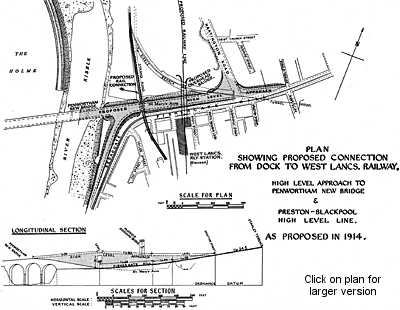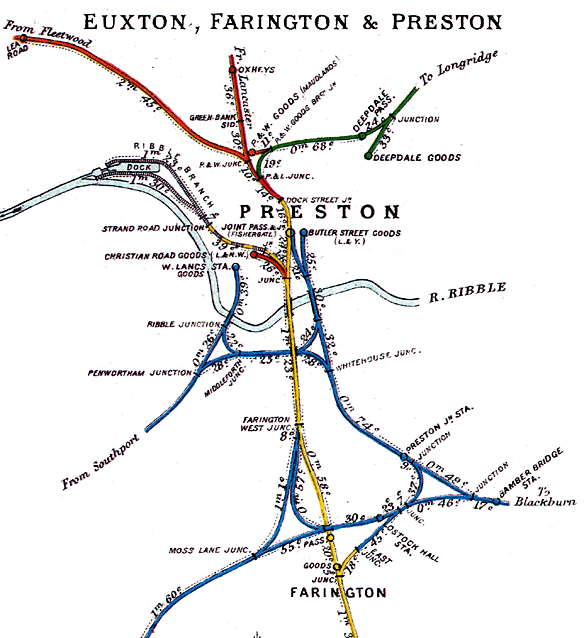
Station Name: PRESTON (WEST LANCASHIRE) [Source:Tony Graham &
Paul Wright]
west_lancs_old4.jpg) Preston WLR station in September 1922. The platform had already been cut back from its original length. Despite the presence of the coaches, passenger services had not been reintroduced; they were from excursion trains to Preston for Guild Week. The former Preston WLR station was used for stabling the empty stock as space was at a premium. The trainshed was showing signs of decay only 22 years after regular passenger services ceased.
Copyright photo from John Alsop collection 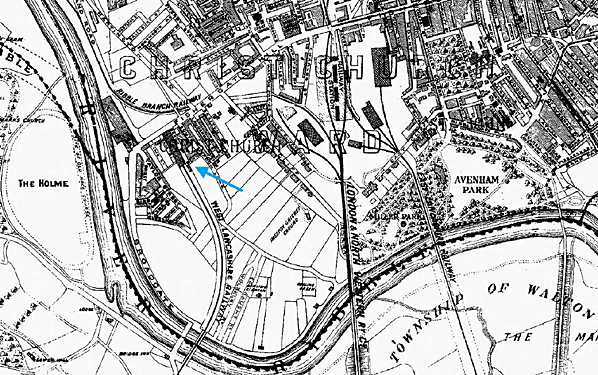 1889 street map.
1889 street map.
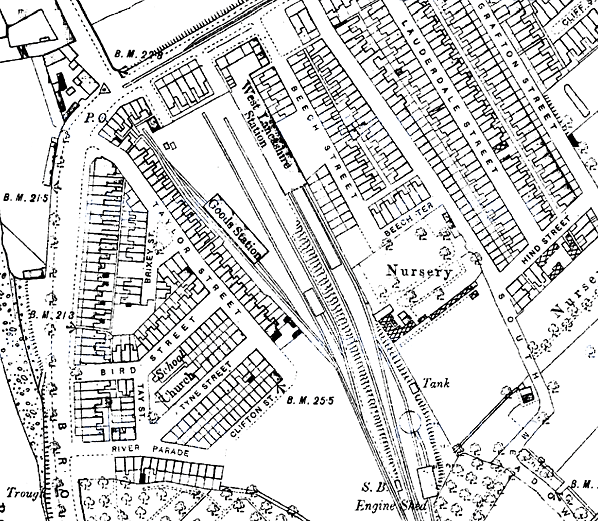 1893 1:2,500 OS map. Preston West Lancashire Railway station when it was still the northern terminus of the Southport and Preston line. The map shows the passenger station with its long island platform that extended beyond the trainshed, the goods yard to the west and the engine shed with its turntable to the south. Outside the station, on Fishergate Hill, the terminus of a tramway running into the town centre can be seen.
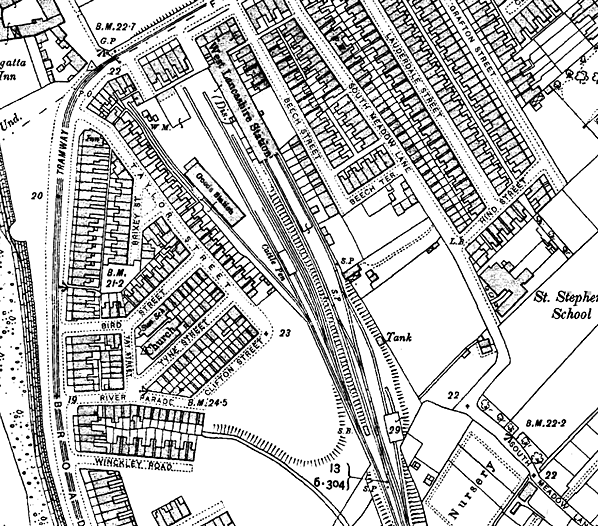 1912 1:2,500 OS map. On this map the Preston West Lancashire station is shown as disused having closed to regular services twelve years earlier. It was in use for goods services at this time, complementing the original goods yard next to it. The station's island platform was in situ, but the turntable, located to the south, had gone. The tramway which formerly terminated outside the station had been extended along the banks of the River Ribble.
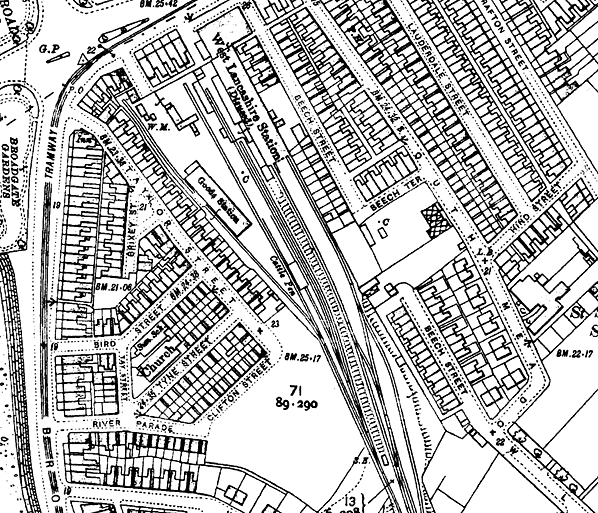 1931 1:2,500 OS map. By now the island platform at Preston West Lancashire station had been cut back, and the engine shed was demolished. In other respects the site was much as it had
been in the 1890s. 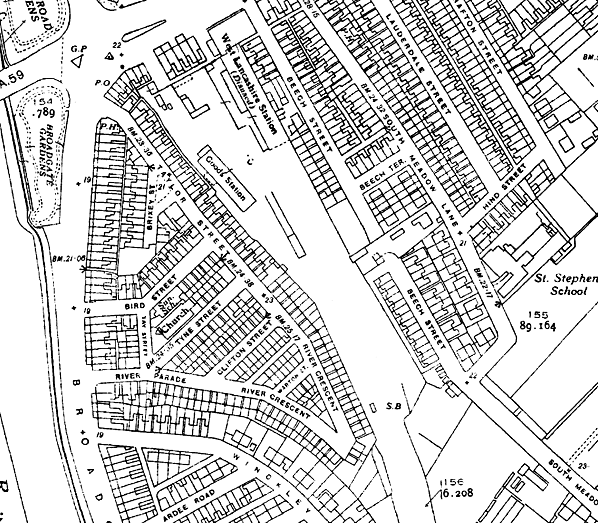 1938 1:2,500 OS map. This map would suggest that all lines had been lifted at Preston West Lancashire Railway station; they had not, and would remain in use for goods services until January 1965.
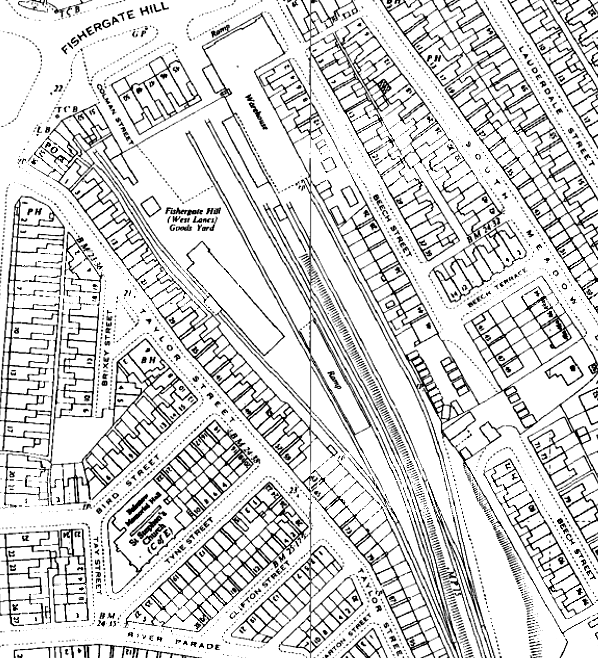
1960 1:2,500 OS map. Preston West Lancashire Railway station five years before it closed. The former passenger station is described as ‘Warehouse’ on the map. It was used for that purpose by Silcock’s, and supplies were brought in by rail. The track layout had been little altered since the WLR period.
west_lancs_old15.jpg) Aerial view of Preston WLR station and its approaches in September 1922. The trainshed roof can be identified and, to its left, is the goods yard. Although passenger coaches can be seen in the station it had been closed for 20 years. The coaches stabled at the station were from excursion trains run as part of Preston Guild Week.
west_lancs_old7.jpg) Preston WLR Station seen from Fishergate Hill in 1936. Although the goods station was still open, the passenger station buildings were redundant and leased to Sicock's, a provender merchant.
west_lancs_old9.jpg) Preston WLR station looking north towards the buffer stops in 1936. The trainshed was still in its original form at this time but the platform had been demolished.
Copyright photo from John Alsop collection west_lancs_old13.jpg) Looking north towards the buffer stops at Preston WLR station in 1939. At this time the original trainshed roof survived in its entirety although parts appeared to be in poor condition. The track layout was as it originally had been, but the island platform had been removed. Note the supporting columns in the centre. They do not extend to ground level because their bases were formerly on the platform. Inside the trainshed the wooden platform adjacent to the goods van, installed after the closure to passengers, was for loading and unloading wagons. The doors of some wagons are open and
appear to contain sacks. Copyright photo from Stations UK west_lancs_old11.jpg) Looking into the trainshed at Preston WLR station in June 1946. A section of the trainshed roof had been removed by this time as had the island platform. Despite its overgrown appearance it was still in use as a goods depot.
Photo by C H A Townley west_lancs_old2.jpg) The last passenger service to Preston WLR visited on 22 September 1962. It was theRCTS (Lancashire Branch) 'Mid Lancs Railtour', seen in this view looking north towards the station. The train could not run all the way into the station as there were no run-round facilities, so it stopped on the approach lines short of the terminus. The locomotve hauled the legs from Preston West Lancs Goods to Penwortham Junction, then Penwortham Junction to Longridge (via Farrington Curve Junction), and finally Longridge to Preston EL where 42844, a Hughes ‘Crab’ took over. The stock consisted of 5 ex- LMS corridor coaches. Seen working 1X23 is G2, 0-8-0 49451. Built for the LNWR to a design by Beames in October 1922, this loco entered service as 231 and received the LMS No. 9451 at the grouping. It was renumbered 49451 at Nationalisation, when allocated to 10B, Preston shed, before moving in December 1950 to 8C, Speke Junction and finally to Wigan Springs Branch in August 1959. It was withdrawn in November 1962 and cut up shortly after, with only one of the class being preserved. This class became commonly known as 'Super Ds' or 'Duck Eights' and was normally seen on freight duties.
west_lancs_old3.jpg)
Looking north towards the buffer stops at Preston WLR Station in September 1962. The station was still in use as a goods depot at this time.
west_lancs10.jpg) Preston WLR station looking south from Fishergate Hill in 1968. The station’s frontage building can clearly be seen as can part of the trainshed roof behind it. The station survived very much in its original form despite closure to regular passenger services 68 years earlier, and to all traffic in 1965.
Photo by Ivan Stuart west_lancs3.jpg) Looking north in 1976 from what would have been a point inside the trainshed at Preston WLR station, facing the booking hall. The station building was still standing but in a derelict state.
Photo by Peter Vickers west_lancs11.jpg) Preston WLR station looking south in August 1978 after the station’s building had been demolished. The island platform and trainshed had been located on the built-up ground directly in front of the photographer.
west_lancs13.jpg) Looking north at the site of Preston WLR station towards the site of the buffer stops in January 2012 from a point just south of the former platform’s end.
Photo
by Paul Wright
 Home
Page Home
Page
|
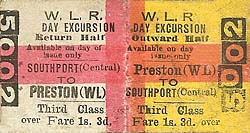

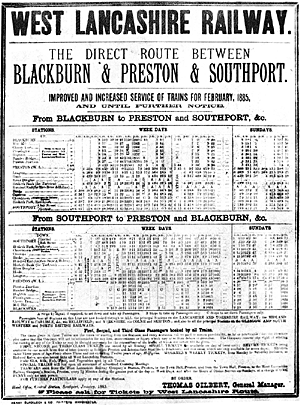
.gif)
